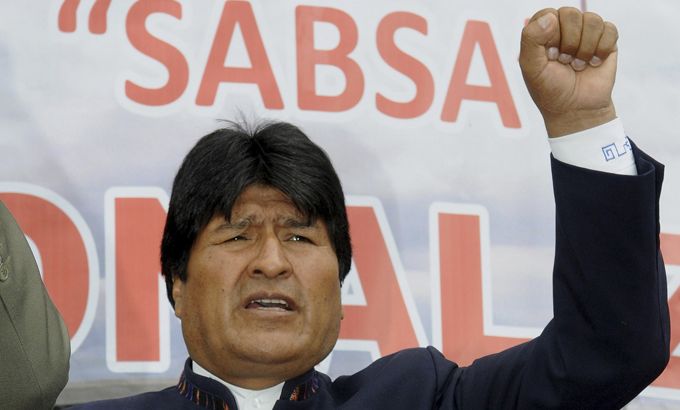
The impact of Bolivia’s nationalisation
As Bolivia takes control of a Spanish-owned airports operator, we examine President Morales’ economic policies.
When he was elected in December 2005 Bolivia’s President Evo Morales promised to break with the past and govern in the interests of the country’s indigenous majority.
|
“Politically, this wins in Bolivia, this is something the president was elected to do. And he is doing it and his popularity is increasing. [But] over the longer term, is this a sustainable policy once the actual engines of growth in the country are nationalised and maybe the productivity is not as efficient or effective as it might otherwise be. But in the time being, for the short term, the president has reaped political benefits from it and I think he is going to continue to do that.“ – Eric Farnsworth, the vice president of the Council of the Americas |
And over the last seven years he has steadily increased state control over the country’s economy, nationalising many key assets including foreign-owned energy firms and communications companies.
On Monday, the state seized control of the Spanish-owned airports operator Sabsa.
Keep reading
list of 4 itemsAfter the Hurricane
World’s coral reefs face global bleaching crisis
Why is Germany maintaining economic ties with China?
In a televised address, Morales said the company had failed to fulfill investment commitments promised almost two decades ago and had made “an exorbitant profit with a derisory capital input”.
The Bolivian government acted despite last month’s plea from Mariano Rajoy, the Spanish prime minister, for Latin American countries to respect his country’s investments in the region.
How will Bolivia’s nationalisation programme impact the country’s economy?
Inside Story Americas is joined by guests: Gerardo Munck, a professor of International Relations at the University of California; and Eric Farnsworth, the vice president of the Council of the Americas.
|
“These signals certainly are going to scare away foreign investors, so if Bolivia does want to have partnership with companies from the outside, the question of legal security – so if you make an investment you know what’s happening with it – is obviously going to be an important concern. So to attract capital they are going to have to give some kind of guarantees that this won’t happen in a few years time.” Gerardo Munck, a professor of International Relations at the University of California |
When will America’s nuclear sites be made safe?
The Hanford nuclear reservation in Washington state is one of the most contaminated sites in the US. Now, the US Department of Energy says one of its tanks is slowly leaking up to 1,100 litres of toxic sludge every year.
|
“This industry is falling apart. These reactors are old, they are unreliable, they are being priced out of the market by gas and renewables and it’s a technology that never really worked …. If there’s a future for this generation of reactors it’s in China, India, Russia and South Korea. Commercially, nuclear power can no longer compete with renewables.“ -Harvey Wasserman, an anti-nuclear activist and journalist |
The government says there is no immediate danger to to the public but the leak is raising concerns about how the US handles its growing stockpile of nuclear waste.
The greatest danger posed by the leak is that the waste could flow underground and reach the nearby Columbia River. So far, there is no evidence it has.
“But the lack of an immediate threat does not in any way, shape or form, should be allowed to reduce the recognition of the long-term threat of this material reaching ground water and/or the Columbia River,” said Washington’s Governor Jay Inslee.
Despite decades of planning and debate, the US still has not decided on a site to permanently store its more than 60,000 metric tonnes of radioactive waste – some of which can remain deadly for thousands of years.
At the moment the waste is stored temporarily at reactor sites. Last month the government announced plans to search again for a final waste repository, but said it would not be ready for another 35 years.
So, when will America’s nuclear sites be made safe?
To discuss this we are joined by Harvey Wasserman, an anti-nuclear activist and journalist.
|
“When they first created these materials as part of creating the atomic bomb 70 years ago, they didn’t figure out what they were going to do with the atomic waste …. The materials that they [the single-shell tanks] are storing are incredibly corosive, are incredibly radioactive, there’s nothing else like them on earth and certainly there’s nothing in nature that’s designed to deal with these incredibly toxic materials. And the idea that any of this stuff could get into the river … is essentially an apocalyptic situation.” – Harvey Wasserman, an anti-nuclear activist and journalist |